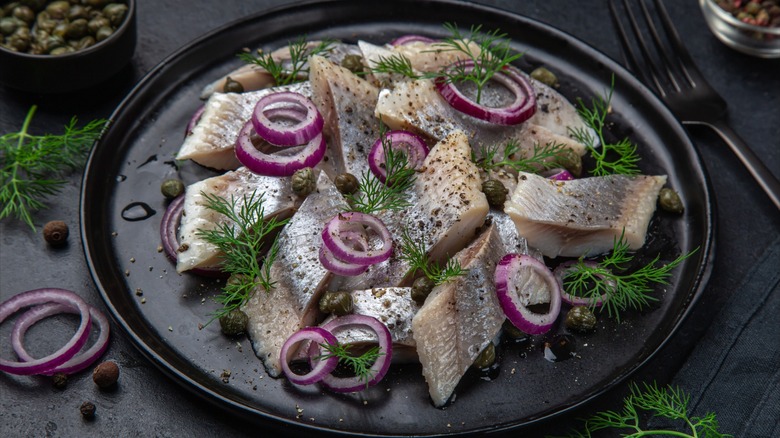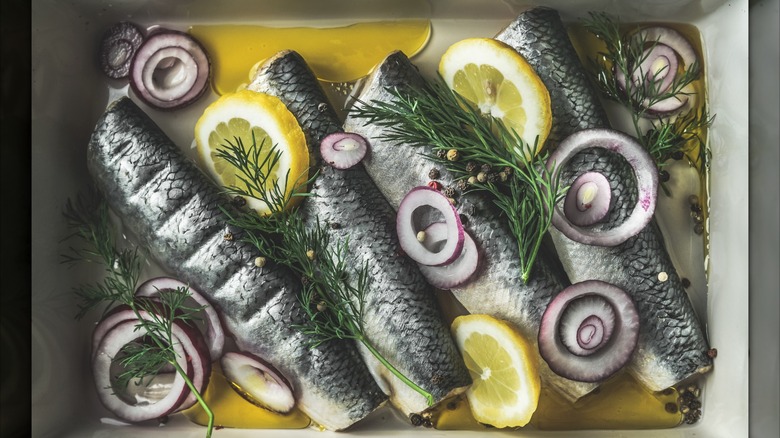How Pickled Fish Became A Swedish Staple
What comes to mind when you first think about Swedish food? If you're not too familiar with the culinary traditions of the Nordic nation, your mind may wander to thoughts of inexpensive Swedish meatballs à la Ikea. It's also perfectly understandable to be reminded of the beloved shrimp salad toast dish known as Skagen. But perhaps the dish most deeply steeped in Swedish cultural history is in the relatively humble and simplistic pickled herring. It's a dish that can be traced all the way back to the medieval period, and has thoroughly ingrained itself into the Swedish culinary lexicon.
How pickled herring became such a prevalent staple in Sweden's diet isn't too much of a mystery if you stop and mull it over for a minute. Even though much of coastal Sweden had access to an abundance of fresh herring in its day, all that fish wouldn't stay fresh if it had to be shipped inland. Pickling herring wasn't (and still isn't) the only way of preserving the fish for later use — salting herring is another common practice. But over the years, pickled herring has etched its own niche in Swedish cuisine, and it now occupies an irreplaceable role on smorgasbords and heartier dishes alike.
Pickled herring is more than just fish and vinegar
If you haven't familiarized yourself with it, pickled fish probably doesn't sound like the most appealing dish out there. But to write off Swedish pickled herring so quickly would certainly be a mistake. Much like how you can add ingredients to elevate pickled eggs, the practice of pickling herring in Sweden is one that makes use of a variety of flavors to make the overall dish one truly worth savoring. It's unfortunately practically impossible to track down exactly how and where one recipe or another originated (again, since pickled herring has been around for so long), but today's recipes surely represent generations of evolving and tweaking the traditional food to become the staple that it is today.
Perhaps the most intriguing aspect of pickled herring is the myriad of flavors that you can add to it during the pickling process. The brine is not only a useful tool in preserving your fish, but it's also a great conduit for other added flavors to seep into it. Some traditional recipes call for veggies such as leeks, carrots, onions, and garlic, as well as herbs and spices like allspice, dill, and more. Essentially, if it seems like a solid choice for accentuating regular herring, it may well work in pickled herring, making the briny dish a much more versatile product than originally meets the eye.

